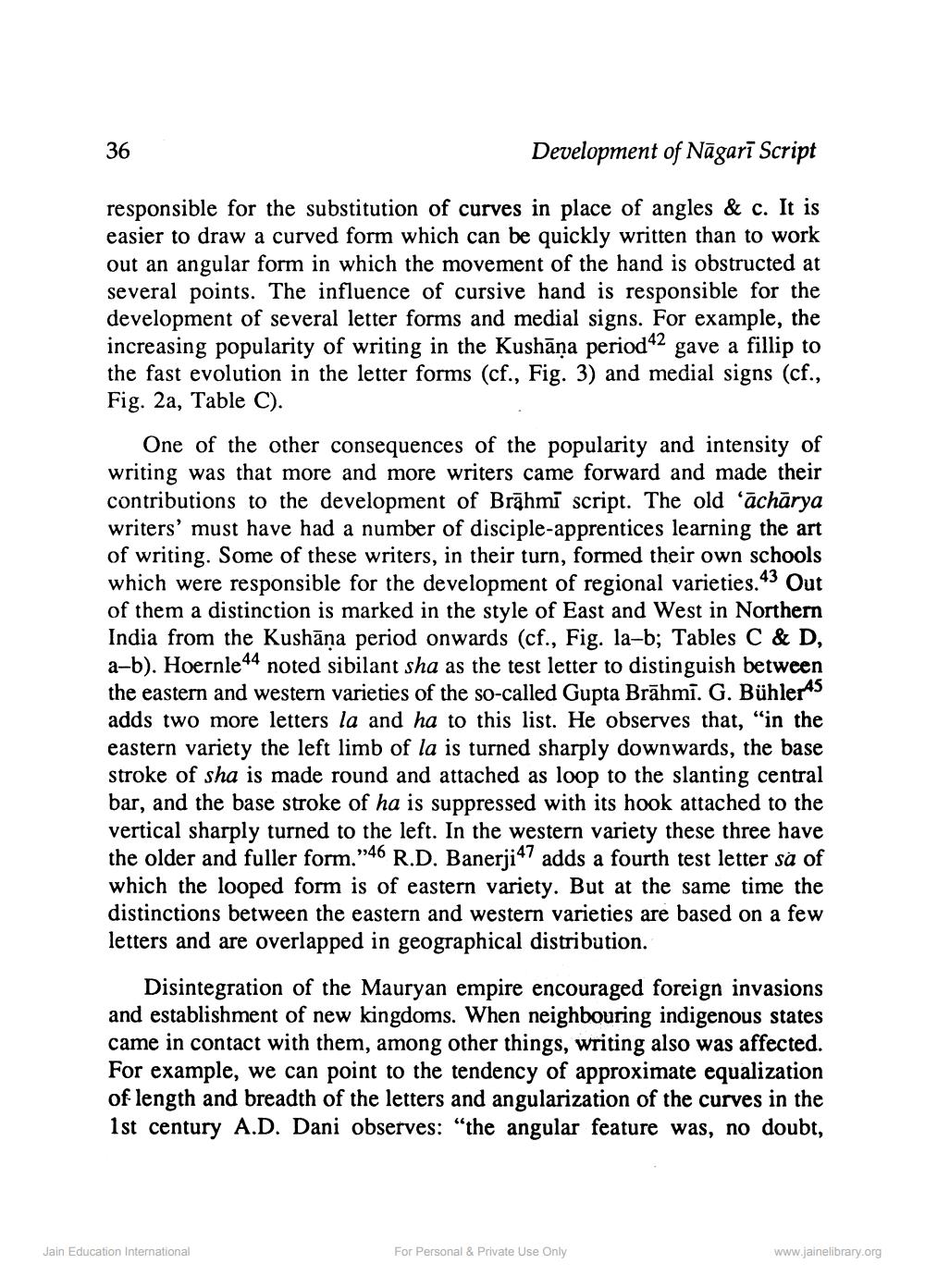________________
36
Development of Nāgarī Script
responsible for the substitution of curves in place of angles & c. It is easier to draw a curved form which can be quickly written than to work out an angular form in which the movement of the hand is obstructed at several points. The influence of cursive hand is responsible for the development of several letter forms and medial signs. For example, the increasing popularity of writing in the Kushāna period 42 gave a fillip to the fast evolution in the letter forms (cf., Fig. 3) and medial signs (cf., Fig. 2a, Table C).
One of the other consequences of the popularity and intensity of writing was that more and more writers came forward and made their contributions to the development of Brāhmi script. The old 'āchārya writers' must have had a number of disciple-apprentices learning the art of writing. Some of these writers, in their turn, formed their own schools
were responsible for the development of regional varieties.43 Out of them a distinction is marked in the style of East and West in Northern India from the Kushāna period onwards (cf., Fig. la-b; Tables C&D, a-b). Hoernle44 noted sibilant sha as the test letter to distinguish between the eastern and western varieties of the so-called Gupta Brāhmi. G. Bühlerts adds two more letters la and ha to this list. He observes that, "in the eastern variety the left limb of la is turned sharply downwards, the base stroke of sha is made round and attached as loop to the slanting central bar, and the base stroke of ha is suppressed with its hook attached to the vertical sharply turned to the left. In the western variety these three have the older and fuller form."46 R.D. Banerji47 adds a fourth test letter så of which the looped form is of eastern variety. But at the same time the distinctions between the eastern and western varieties are based on a few letters and are overlapped in geographical distribution.
Disintegration of the Mauryan empire encouraged foreign invasions and establishment of new kingdoms. When neighbouring indigenous states came in contact with them, among other things, writing also was affected. For example, we can point to the tendency of approximate equalization of length and breadth of the letters and angularization of the curves in the 1st century A.D. Dani observes: “the angular feature was, no doubt,
Jain Education International
For Personal & Private Use Only
www.jainelibrary.org




